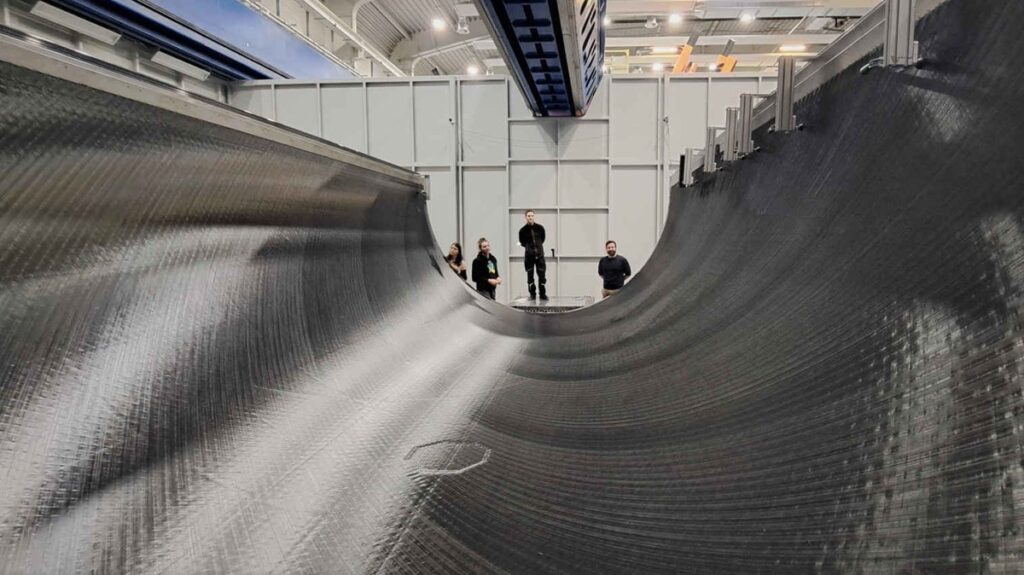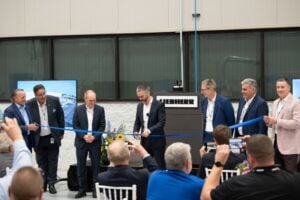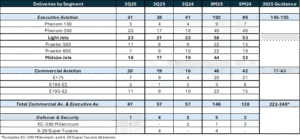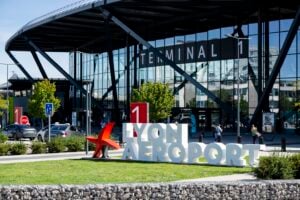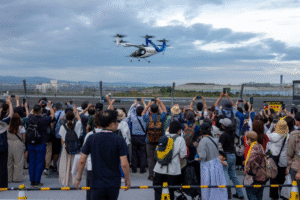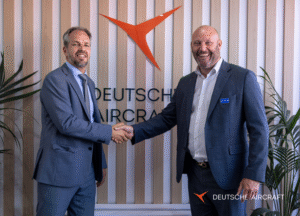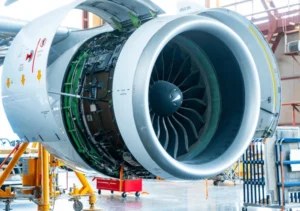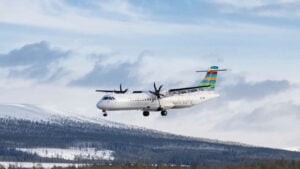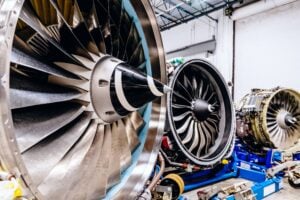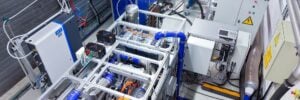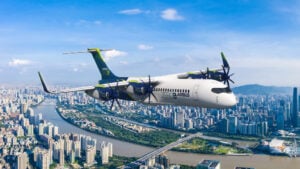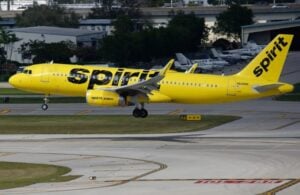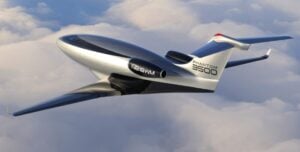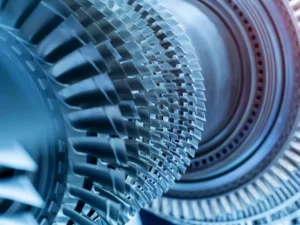Aluminium has been the go-to material for aircraft construction for many years, with continuous improvements in production. However, with the focus now on sustainability and climate-friendly aviation, new solutions are needed. To showcase the revolutionary possibilities in materials and production, the German Aerospace Centre (DLR) has collaborated with Premium AEROTEC, Airbus, and Aernnova to develop a fuselage component made entirely of carbon fibre reinforced thermoplastic.
This special plastic, LM_PAEK, not only makes the component more damage-tolerant but also reduces its weight by approximately one tonne compared to the aluminium counterpart. The development involved ground-breaking technologies for cost-efficient, resource-saving processes with minimal energy consumption.
As part of the European research programme Clean Sky-2, a “Multifunctional Fuselage Demonstrator” (MFFD) was created at DLR in Augsburg. This demonstrator, an eight-meter-long fuselage outer shell, aims to achieve a 10% reduction in aircraft fuselage weight and a 20% reduction in aircraft running costs. The ultimate objective is to achieve a production rate of 60-100 aircraft per month. On July 18, 2023, the MFFD project partners successfully delivered the outer shell.
The thermoplastic carbon fibre reinforced plastics (CFRPs) used in the outer shell have unique properties, retaining their stable shape when cold but becoming reshaped when heat is applied within a certain temperature range. This characteristic facilitates better repair and recycling of components, enhancing sustainability.
The collaborative effort between DLR, Premium AEROTEC, and project partners has resulted in the successful development of three essential technologies: laser-based in-situ fibre deposition, continuous ultrasonic welding and electrical resistance welding. These innovations were significantly advanced at the DLR Centre for Lightweight Production Technology (ZLP) in Augsburg.
DLR has achieved a remarkable feat with the MFFD, producing the world’s largest aircraft component made of fibre-reinforced thermoplastics. These technologies hold great promise for the future of aviation, as lightweight construction becomes increasingly crucial for sustainable flight.
After finalising finishing touches and door frame installation at Premium Aerotec’s facility in Augsburg, the fuselage shell is currently en route to the Fraunhofer Institute for Manufacturing Technology and Applied Materials Research (IFAM) in Stade. There, it will be joined with the lower shell from the Netherlands as part of the STUNNING project to create the complete fuselage barrel by year-end. Airbus will carry out the final validation and verification of these innovative technologies at the centre for Applied Aeronautics Research (ZAL) in Hamburg. The project is a significant step towards climate-friendly flying and reinforces the region’s, the nation’s and Europe’s competitiveness in aircraft development.
About the programme:
The “Multifunctional Fuselage Demonstrator” (MFFD) is a project that falls under the Large Passenger Aircraft initiative and is funded by the European Clean Sky-2 programme. Clean Sky-2 is a collaborative aviation partnership between public and private entities in Europe, dedicated to enhancing the sustainability of air travel. By the year 2050, the programme aims to achieve a remarkable 75% reduction in CO2 emissions from air traffic compared to the levels recorded in 2000. Additionally, it seeks to decrease noise emissions around airports by 65%, contributing to a more environmentally friendly and sustainable aviation industry.

